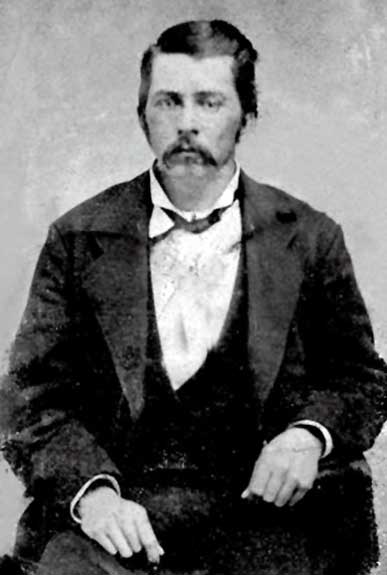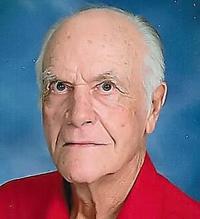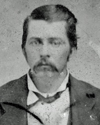
Willard Ayers: From Bombings to Boardrooms, An American Paradox
Willard Ayers is, depending on who you ask, either a reformed idealist, a domestic terrorist who escaped justice, or a consistent radical whose methods evolved but whose core convictions remain unbroken. Few figures in American history encapsulate the tumultuous idealism and violent divisions of the 1960s and 70s quite like him. From his early days as a student activist to his leadership of the militant Weather Underground, and later, his transformation into a respected academic and education reformer, Ayers’ life is a sprawling narrative that continues to provoke, challenge, and confound.
Born in 1944 into a comfortable, middle-class family in Glen Ellyn, Illinois, Ayers’ early life hardly hinted at the revolutionary path he would eventually tread. His father, Thomas Ayers, was a prominent businessman who would later become CEO of Commonwealth Edison. Yet, the relative privilege of his upbringing did not insulate him from the social ferment of the era. Like many of his generation, Ayers was deeply affected by the burgeoning Civil Rights Movement, the escalating war in Vietnam, and the pervasive inequalities he observed in American society.
He enrolled at the University of Michigan, where he quickly became involved in student activism. It was the mid-1960s, a time when the Students for a Democratic Society (SDS) was gaining national prominence, advocating for participatory democracy and challenging the status quo. Ayers gravitated towards the SDS, becoming a passionate advocate for civil rights and a vocal opponent of the Vietnam War. He organized protests, participated in sit-ins, and began to develop a radical critique of American imperialism and capitalism.

However, as the decade wore on and the war intensified, a growing faction within the SDS, including Ayers, grew frustrated with what they perceived as the ineffectiveness of peaceful protest. The assassinations of Martin Luther King Jr. and Robert F. Kennedy, the police brutality at the 1968 Democratic National Convention, and the relentless escalation of the Vietnam War led many to believe that the system could not be reformed from within. This disillusionment fueled a radical shift, pushing some towards more confrontational, and ultimately, violent tactics.
This radicalization culminated in the formation of the Weather Underground Organization (WUO), an offshoot of the SDS that officially emerged in 1969. Ayers, along with his future wife Bernardine Dohrn and others, became a prominent leader. The Weathermen, as they were commonly known, adopted a revolutionary Marxist ideology, aiming to create a clandestine revolutionary party to overthrow the U.S. government, which they viewed as an imperialist power. Their slogan, "Bring the War Home," articulated their belief that domestic action was necessary to disrupt the American war machine and support liberation movements abroad.
The Weathermen’s initial public actions were designed to shock and provoke. The infamous "Days of Rage" in Chicago in October 1969 saw hundreds of young radicals clash violently with police, smashing windows and cars, leading to numerous arrests and injuries. This marked a clear break from mainstream protest movements and signaled the group’s commitment to direct action, even if it meant confrontation and property destruction.
However, the group soon moved beyond street fighting to more serious acts of domestic terrorism. Between 1970 and 1975, the Weather Underground claimed responsibility for a series of bombings targeting government buildings, police stations, and corporate offices. Notable targets included the Pentagon, the U.S. Capitol Building, and the New York City Police Headquarters. Critically, the Weathermen claimed that they carefully planned these attacks to avoid casualties, often issuing warnings to ensure buildings were evacuated. "We were against killing people," Ayers wrote in his 2001 memoir, Fugitive Days. "We were trying to be as careful as possible." This distinction, while cold comfort to those who experienced the fear of their attacks, remains a central point of Ayers’ self-defense.
The most tragic incident involving the Weather Underground, and one that deeply affected its members, was the accidental Greenwich Village townhouse explosion in March 1970. A bomb factory in the basement of a shared house detonated prematurely, killing three members of the group: Terry Robbins, Diana Oughton, and Ted Gold. Ayers and Dohrn were not present but were profoundly impacted by the loss, which reportedly led the group to re-evaluate some of its more reckless tactics.
Following the townhouse explosion, Ayers and Dohrn, along with other key Weathermen, went underground. For over a decade, they lived as fugitives, moving from city to city, adopting aliases, and evading a massive FBI manhunt. They were among the most wanted individuals in America, their faces plastered on "Wanted" posters, symbolizing the radical fringe of a generation. During this period, Ayers continued to write and publish revolutionary communiques, attempting to maintain the ideological struggle from the shadows.
The tide began to turn in the late 1970s. With the Vietnam War over and the revolutionary fervor of the early 70s having waned, many former radicals began to resurface and face legal consequences. In 1980, Ayers and Dohrn decided to surrender. They were charged with various federal and state crimes related to their activities with the Weather Underground. However, many of the charges were ultimately dropped due to prosecutorial misconduct and the FBI’s illegal COINTELPRO program, which involved extensive surveillance and disruption of radical groups. This legal outcome, while a relief for Ayers and Dohrn, fueled criticism from those who believed they had evaded justice for their violent acts.
With his legal troubles largely behind him, Ayers embarked on a remarkable second act. He pursued a career in academia, earning a doctorate in education from Teachers College, Columbia University. He joined the faculty of the University of Illinois at Chicago (UIC) in 1987, where he became a distinguished professor of education, focusing on issues of urban education, juvenile justice, and the history of social movements. He authored numerous books and articles, becoming a respected voice in his field, particularly for his work on small schools and progressive pedagogy.

Yet, the shadow of his past never fully receded. Ayers has consistently refused to offer a full apology or express regret for his actions with the Weather Underground, a stance that has been a continuous source of controversy. While he has expressed remorse for the harm caused and acknowledged the accidental deaths in the Greenwich Village townhouse, he has largely maintained that the moral imperative behind the Weathermen’s actions – to resist an unjust war and an oppressive system – was valid. In a 2001 interview, when asked if he regretted his actions, he famously stated, "I don’t regret setting bombs. I feel we didn’t do enough." This statement, often quoted and sometimes misconstrued, solidified his image as an unrepentant radical in the eyes of many critics.
This perceived lack of repentance has fueled ongoing debate, particularly during the 2008 U.S. presidential election. Ayers’ name resurfaced prominently due to his tangential connection to then-candidate Barack Obama. Both lived in the Hyde Park neighborhood of Chicago, served on the board of the Woods Fund of Chicago (a philanthropic organization), and participated in discussions on education reform. While the relationship was never close or political, conservative media and political opponents attempted to link Obama to Ayers’ radical past, portraying the connection as evidence of Obama’s own hidden radicalism. Both Obama and Ayers downplayed the relationship, with Obama describing Ayers as "a guy who lives in my neighborhood, who’s a professor of English in Chicago." Ayers himself stated the connection was minimal, writing in The New York Times, "The guilt-by-association game is transparent and predictable… We’ve never been close friends, and we’ve not sought to conceal the little contact we’ve had."
Today, Willard Ayers remains a complex and polarizing figure. He retired from UIC in 2010 but continues to write, lecture, and engage in activism. His work in education, particularly his advocacy for community-based schooling and reforms in juvenile justice, has earned him praise from colleagues and students. Yet, for many, he will always be the unrepentant bomber, a symbol of radical violence.
Ayers’ life forces uncomfortable questions: Can a society forgive or integrate those who once sought its overthrow? Is it possible to separate a person’s past actions from their present contributions? What constitutes true repentance? And what lessons, if any, can be drawn from the radical movements of the past in the context of contemporary social justice struggles?
In a 2013 interview, reflecting on his life, Ayers offered a nuanced perspective: "I don’t regret trying to stop the Vietnam War… I regret that the war went on as long as it did. I regret that we weren’t able to stop it. And I regret any harm that might have come to anyone through our actions." This statement, while still not a full recantation, highlights the enduring tension in his narrative: a deep moral conviction against injustice, coupled with a willingness to employ extreme measures, and a subsequent grappling with the consequences.
Willard Ayers stands as a living testament to a turbulent chapter in American history, a man who dared to challenge the system with bombs and books, and whose journey continues to spark debate about activism, violence, justice, and the possibility of redemption in a deeply divided nation. He remains an uncomfortable mirror, reflecting the complexities of radicalism and the unfinished conversations about what it means to be a revolutionary in America.


